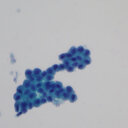Rosa rugosa flavonoids alleviate myocardial ischemia reperfusion injury in mice by suppressing JNK and p38 MAPK.
Keywords
Abstract
Although Rosa rugosa has been applied for preventing coronary artery disease, the pharmacological mechanism is little explored. In this study, the effects and mechanisms of Rosa rugosa flavonoids (RRF) on myocardial ischemia reperfusion injury (MIRI) were investigated.
Mice were pretreated by intragastric administration of 600 mg/kg RRF for 7 days. Then MIRI was induced by 45 minutes coronary artery ligation and 3 hours reperfusion. Myocardial infarct size (MIS) and histopathology, activities of myocardial enzymes, and effects of RRF on inflammation and apoptosis were evaluated.
Pretreating the mice with RRF significantly reduced MIS and inhibited activity of plasma myocardial enzymes. Activity of the enzymes associated with anti-oxidation, SOD, and TEAC, and mRNA expression of NOX2 were significantly elevated. RRF pretreatment significantly decreased the translocation of p65 from the cytoplasm into the nucleus and reduced the expression of the pro-inflammatory cytokines, IL-6 and IL-1β. RRF pretreatment also significantly prevented the expression of caspase-3 and Bax, and increased the expression of Bcl-2. And RRF inhibited the phosphorylation of JNK and p38 MAPK.
RRF significantly inhibited MIRI through anti-oxidative, anti-inflammatory, and anti-apoptosis effects, and mechanisms were associated with its inhibition on phosphorylation of JNK and p38 MAPK.



